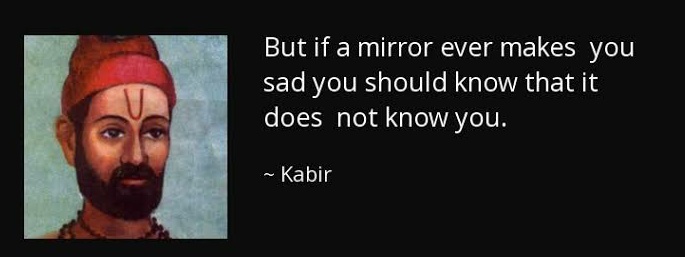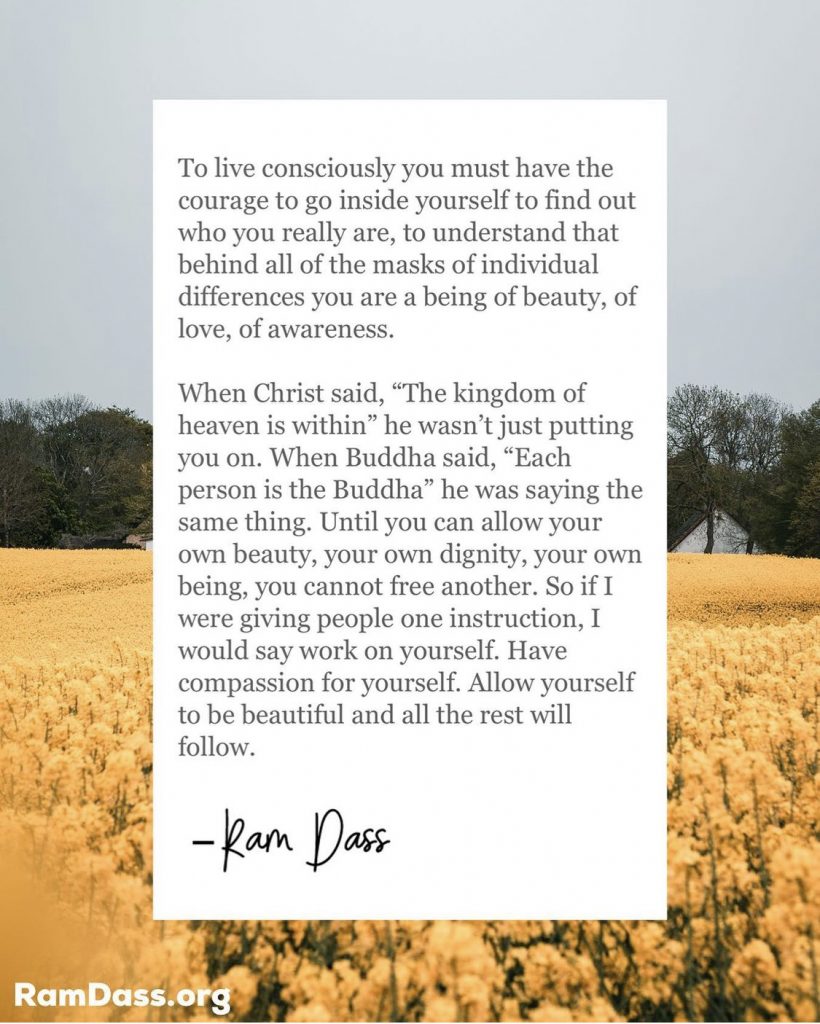The Other Option.
“So one asks, is there a stop to thought and time? Because if there is time, that is if there is thought, the perpetual occupation, as most of us are perpetually occupied, thinking about various things, chattering, mind is never… the brain is never quiet, but always groping, searching, remembering, hoping. Such a mind, obviously, is never quiet. But to perceive that it is not quiet, without any direction, say it must be quiet, to perceive it, to observe it’s not quiet, then it becomes extraordinarily quiet, without any compulsion, without any practice, which means one requires great sensitivity, attention, awareness. Only in that absolute silence of the mind, a silence which is not cultivated by thought – it isn’t a silence between noise, between two noises, or between two thoughts – this silence is not that. Silence demands total freedom from all self-centred activity and pursuit of pleasure and fear and so on. Only in that silence completely can there be that which is nameless.”
Jiddu Krishnamurthi
Because the First 4 sutras are the most important let’s not move on to quickly…
The Layup
Just to drive home the subject and aim – a few notes in review regarding what Patanjali offers in 1.1-1.3
As sutra 1.1-2 lay out the topic to be discussed yoga and defines yoga as absolute peace of mind, or a full stoppage of activities of the mind. The result of which is coming home to our true self. Or as James Baldwin said:
“Love takes off masks
that we fear we cannot live without
and know we cannot live within”
In the reading of sutra 1.2 we may become concerned that yoga according to Patañjali is akin to becoming brain dead, but it is not this at all. Instead it’s merely removing the mask – and revealing the ability to gain such a sense of quiet and stillness that nothing that is changeable affects us any longer. We take off the mask of prakriti and it’s associations. The functioning of the body, brain etc all continue so that we may remain alive and healthy as long as we must to move through our life and work through our accumulated karma (the reside of our good and not so good actions).. but the constant ebb and flow of ecstasy and pain, happiness and discomfort no longer throw us around on the stormy seas of life. We can live in peace … an eternal homecoming. We are in yoga, and yogic activites do not accumulate additional karma to be burned through.
So if this is yoga then why all the physical practices, meditation and self study? Knowing this can’t we just decide to be still and let the mind stop wrongly associating or in the very least why not just take up the task of raja yoga (meditation) and leave the rest?
The answer is simple….have you tried that? Can you define yourself without words? Can you see who you are beyond your body, your relationships, your labels? And can you rest wholly in that definition without any doubt?
Samkhya and Yoga say that the proximity of nature and the self make them appear to be one and the same. Like Salt in water. When dissolved we can not separate the two. We have to go through the distillation process to separate them…heating up the salt water until the water evaporates and salt only remains. The same is with our practice. Through yoga practice we “heat up” the water (prakriti) until it evaporates and we are left with only the salt. The water is still there just in a different form (gas) but we are no longer mixed up in it’s flow. This is a slooooow burn. A very sloooooow burn. Remember the process from day one’s email and Yoga Sutra 1.7. Before we can fully experience this distillation we first study it with a competent teacher/read the writings of those “blokes with no axe to grind” (agamah). Then with faith in what they have to say about the science we begin to infer the meaning by bringing the observations into our own life’s practice (anumana) and eventually the experience is had (pratyaksa).” This process breeds yogic pratyaksha when the mind is in a state of clarity (sattva) and not shrouded by tamas and rajas. We will get into the three gunas later on but know that this is an aim of the bahiranga (lower limbs of ashtanga yoga)- to make the intellect sharp and not weighed down or distracted.
Even those who are able to access deep states of meditative absorption still must learn to “stay” with the stillness. Some yogis (those with the samadhi capability) use their meditative capacity on every object in nature one at a time…first becoming completely focused in a state of observation and absorption until the dissolution (experiential realization/yogica pratyaksa of “I am not that thing”) occurs – at which point they turn their meditation to another tattva/object/sense etc and repeat the process. Again, it is a process which takes dedication and discipline. Up until this moment we’ve lived lives of constant activity, especially as householders. We have jobs, relationships, insecurities, biases, expectations, preferences, aversions, memories, misconceptions etc etc etc. There is even activity in our sleeping state. According to the tradition the movements of our mind and the resulting attachments have woven a deep web of ignorance (avidya) covering our unconditional nature. So we utilize these age old practices of yoga to make the body and the mind steady, easeful and prepared to go consistently through the process of removing the layers of confusion and stop mixing up the proverbial salt and water. First we identify what is harmful (klishta) and what is helpful (aklishta) in the way our mind acts and eventually (slowly) we are able (with that sharp and clear intellect) to release the grip of the mind’s perpetual and often chaotic activities altogether. The mind is satisfied and then rests. And so it is the same intellect that binds us and offers our release depending on what qualities (gunas) are running the show.
So…sitting around and reading the sutras and waiting for something to happen will not likely lead most of us anywhere meaningful. We have to commit to the process of living yoga, softening the loud bursts and edges towards a sort of focus. Most of our practice (from ethical precepts to the seat we take and how we breath) is intelligent and graceful preparation for this. Reading and contemplating the texts is a support. Abhyasa and Svadhyaya must go together.
So we take up the torch of throwing light on the truth OR….
we can look to the alternative route …
in Sutra 1.4 Patanjali writes:

- vrtti: activities
- sarupyam: mistaking something for something else
- itaratra: at all other times
So to put it together: when not aiming our mind towards yoga and apavarga (itaratra- at all other times) we are not residing in the true self but instead we are in a perpetual state of wrong association (sarupyam) where we are mistaking this prakritic body/mind complex and all it’s activities (vrttis) as the self. “Hi my name is Jennifer, I am a yoga teacher, I am a dog mom, I am a vegetarian, I am tall etc etc etc.” Because ALL of this is conditional and changeable, then by default all of this is of the body but not of the self which is immutable. However, we apply this “I am” to the body/mind as if it is who we are. Citta and Cit mistakenly appear to be the same thing. This is the big mistake that governs most of our identities and therefore drives so much of our pain (dukha). Again the same mind/organizing faculty (specifically the buddhi or intellect) has the capacity for misidentification when governed by ignorance (avidya ruled by tamas) AND for realization when the mirror is wiped clean through yoga practice and the lights are turned on (sattva guna increased). Up until that point we see our self through a dirty reflection, always trying to grasp the little bits of distorted imagery we find as FACT. And it is this misconception (viparyaya) that perpetuates dukha (pain).

So in conclusion we have two options according the these rishis. Yoga (liberation, peace) or Misidentification and grasping at the next “I am” which will always change / perpetuating Samsara (cycle of existence and cyclical suffering).
And so we practice…and our practice breeds that “sensitivity, attention and awareness” that help clear the chatter. Or we don’t…and keep on keeping on, keeping on, keeping on, keeping on, keeping on….

See you tomorrow :),
Jennifer
